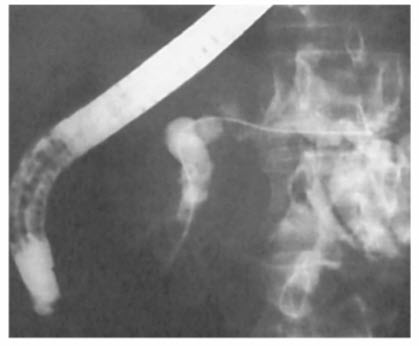Question 8#
In patients undergoing endoscopic retrograde cholangiopancreatography (ERCP) for diagnosis and staging of chronic pancreatitis, the population most at risk of developing procedure-induced pancreatitis is:
A. One with calculus diseaseB. One with intraductal lesions
C. One with sphincter of Oddi dysfunction
D. One with a high percentage of parenchymal calcification
Correct Answer is C
Comment:
Endoscopic retrograde cholangiopancreatography (ERCP) is considered to be the gold standard for the diagnosis and staging of chronic pancreatitis. It also serves as a vehicle that enables other diagnostic and therapeutic maneuvers, such as biopsy or brushing for cytology, or the use of stents to relieve obstruction or drain a pseudocyst (Fig. below). Unfortunately, ERCP also carries a risk of procedure-induced pancreatitis that occurs in approximately 5% of patients. Patients at increased risk include those with sphincter of Oddi dysfunction and those with a previous history of post-ERCP pancreatitis. Post-ERCP pancreatitis occurs after uncomplicated procedures, as well as after those that require prolonged manipulation. Severe pancreatitis and deaths have occurred after ERCP, it should be reserved for patients in whom the diagnosis is unclear despite the use of other imaging methods, or in whom a diagnostic or therapeutic maneuver is specifically indicated.

Pancreatic duct stenting. At endoscopic retrograde cholangiopancreatography, a stent is placed in the proximal pancreatic duct to relieve obstruction and reduce symptoms of pain. Pancreatic duct stents are left in place for only a limited time to avoid further inflammation.